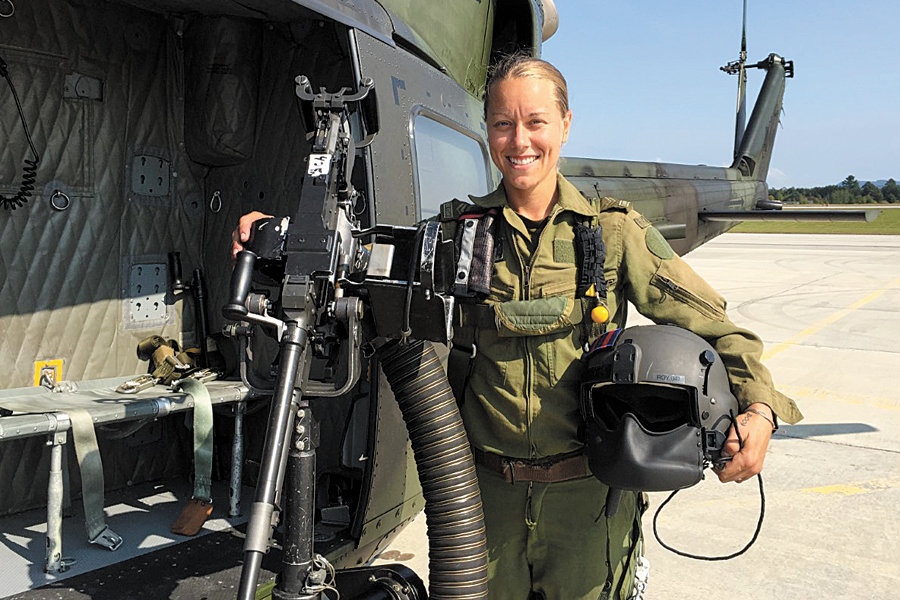The first female door gunner
By Lookout on Nov 12, 2017 with Comments 0

Corporal Alexandra Roy
Édouard Dufour, Adsum Newspaper ~
Corporal Alexandra Roy’s career has taken a very unexpected turn. She once had her feet firmly planted on the ground as a combat engineer with 5 Combat Engineer Regiment, but now she operates C6 machine guns onboard CH-146 Griffon helicopters with 430 Tactical Helicopter Squadron, based in Valcartier, Quebec.
“The last group of door gunners returned from Iraq, so they started planning for who would replace them,” said Corporal Roy, noting that tactical aviation door gunners are specialists drawn from combat arms occupations and may hold the job for no more than two years.
“When the job was offered to me, I absolutely did not want to miss out on such a unique opportunity,” she said, adding that she would like to be deployed on a mission such as Operation Impact.
A health test, many theoretical training sessions, and hours spent carrying out intensive flight exercises are necessary to fully master the skills of a door gunner. After seven months of continuous training, Cpl Roy has already banked over 140 flight hours.
According to Corporal Roy, the skills needed to be a door gunner include the ability to “adapt quickly and demonstrate a desire to learn.”
In a combat situation, door gunners are responsible for attacking the enemy, using their best judgement. To do that, they have a weapon able to hit a target up to 800 metres away.
“There is a red round every four rounds so that we can see the trajectory of the projectiles,” explains Cpl Roy.
Gunners always wear two layers of clothing to protect themselves from the fire. They also wear a helmet directly connected to the radios of the aircraft they are travelling in. A sturdy harness attaches them to the aircraft and prevents any deadly falls.
In combat
Door gunners’ skills are mainly used to ensure the safety and protection of soldiers on the ground when they are outnumbered by the enemy. Cpl Roy says it is not a capability used to attack the enemy head on.
“The Griffon is very versatile; it can insert soldiers and transport equipment. Canada’s CF-18 (Hornets) and the United States’ Apache helicopters can take care of conducting largescale attacks. The Air Force combines a number of elements,” she said.
Door gunners have major responsibilities.
“When touching down in a landing zone that is small and surrounded by trees, we must make sure there are no other obstacles and remain in contact with the crew at all times. There is also a whole language that we have to learn,” she says, alluding to the Royal Canadian Air Force’s special terminology.
Opportunities for women
As the first female to hold a door gunner position at the squadron – and perhaps the first in the Canadian Armed Forces (CAF) – Cpl Roy highlights the CAF’s work to recruit women.
“Whether you are male or female, the army is unfortunately not for everyone. For women, it is important to lean in, trust yourself, and not think that it is impossible to join the Forces.”
Nevertheless, the soldier is of the opinion that “more female role models” could inspire more young women to join the CAF.
“There is a large number of occupations to choose from—there is something for everyone.”
Filed Under: Top Stories
About the Author:





